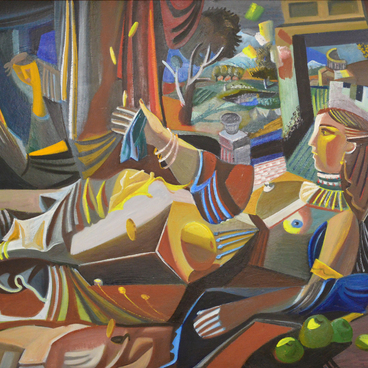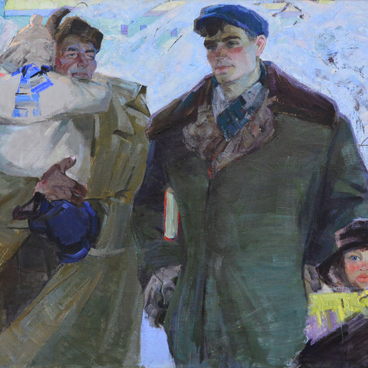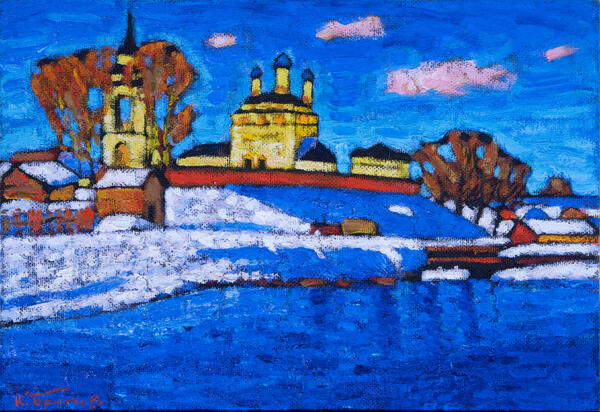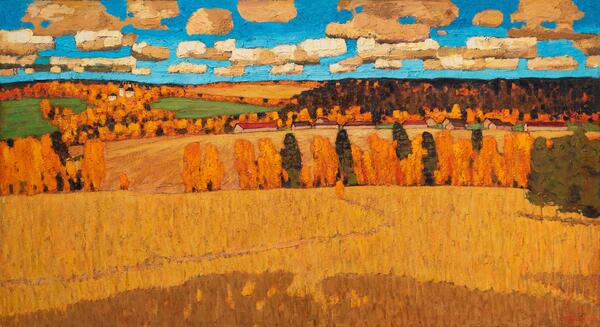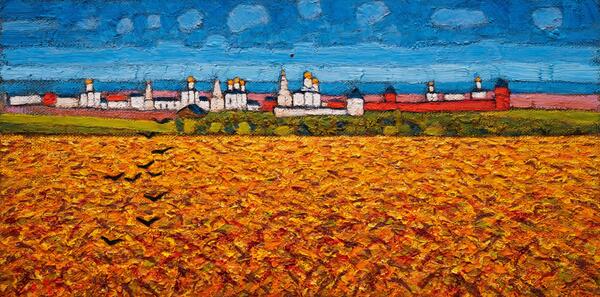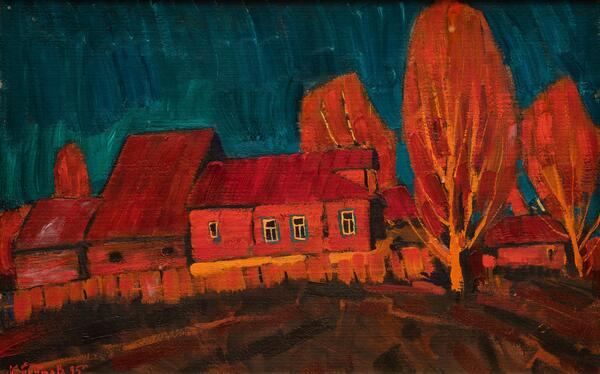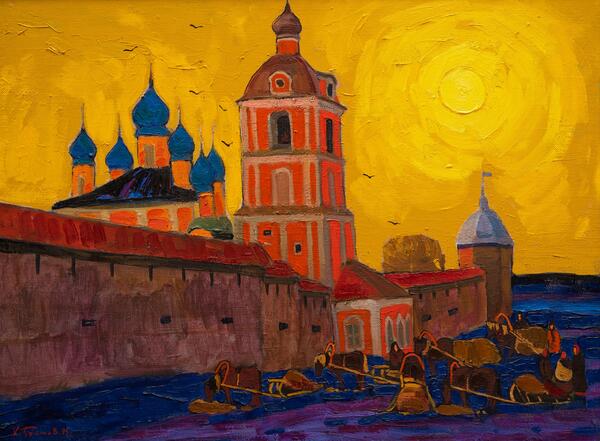There are painters whose manner, once it’s seen, can’t be forgotten. Kim Britov is one of them. ‘I am a landscape painter by vocation, all my best paintings are about nature, ” he said about himself. It’s hard to argue with this statement. During the 60 years of his creative career he made around 3000 paintings with most of them being the village and city landscapes.
Looking at this work, the first thing an eye sees is colour. All-encompassing, bright, and powerful, it creates an impression of form, air, and mood. The artist’s daughter Natalya Britova noted that autumn, especially mellow autumn, was her father’s favourite season. Kim Britov lived in Vladimir, that’s why nature of his motherland was especially loved and appreciated by him. He also made a series of trips around the country and worked in Karelia, Mordovia, Ural. In the 1960s and the 1970s such creative assignments were popular among the painters. Kim Britov can naturally be called the founder of Vladimir school of painting. Lacking political and social context, his art is distinctive with its expressiveness, decorativeness of colour and form, wide brushstrokes and flat depiction. However, in spite of the bright and festive image, almost all his works are deeply lyrical and touched with the author’s love for nature.
In this work the artist used the bright, almost local dark blue, orange, blue colours to the full extent. A work with the same subject depicting Gorokhovets (Winder in Gorokhovets, 1983) is now in the collection of the State Vladimir Suzdal Museum Reserve. There the artist used the identical composition depicting the winter’s mood and state.
Looking at this work, the first thing an eye sees is colour. All-encompassing, bright, and powerful, it creates an impression of form, air, and mood. The artist’s daughter Natalya Britova noted that autumn, especially mellow autumn, was her father’s favourite season. Kim Britov lived in Vladimir, that’s why nature of his motherland was especially loved and appreciated by him. He also made a series of trips around the country and worked in Karelia, Mordovia, Ural. In the 1960s and the 1970s such creative assignments were popular among the painters. Kim Britov can naturally be called the founder of Vladimir school of painting. Lacking political and social context, his art is distinctive with its expressiveness, decorativeness of colour and form, wide brushstrokes and flat depiction. However, in spite of the bright and festive image, almost all his works are deeply lyrical and touched with the author’s love for nature.
In this work the artist used the bright, almost local dark blue, orange, blue colours to the full extent. A work with the same subject depicting Gorokhovets (Winder in Gorokhovets, 1983) is now in the collection of the State Vladimir Suzdal Museum Reserve. There the artist used the identical composition depicting the winter’s mood and state.


